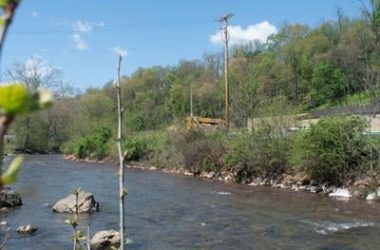By KEN WARD JR.
Charleston Gazette-Mail
CHARLESTON, W.Va. — Former Massey Energy CEO Don Blankenship on Thursday urged the U.S. Supreme Court to take up an appeal of his criminal mine safety conviction, arguing that two lower courts got the law wrong in the case and alleging again that he was railroaded by political enemies.

(File photo)
Attorneys for Blankenship filed their formal petition asking justices to review a 4th U.S. Circuit Court of Appeals ruling that upheld Blankenship’s conviction in U.S. District Court for conspiring to violate federal mine safety standards at Massey’s Upper Big Branch Mine, where 29 miners died in an April 2010 explosion.
Among other arguments, the Blankenship petition says Berger and the 4th Circuit ignored legal precedent on the definition of criminal willfulness in a way that “threatens to dramatically expand” the “federal criminal liability of individual corporate officers and directors for the unintended consequences of corporate actions.”
“It will open the door to jury presentations that criminal willfulness is established on a finding that corporate officials did not do enough to ensure that their companies never operate outside of any legal or ever-changing regulatory requirements,” the petition says. “And it will allow those in supervisory positions to be incarcerated for management decisions they made without any conception of illegality or intent that any laws would be violated.”
In a six-page section titled “Introduction,” Blankenship lawyer Bill Taylor also repeats Blankenship’s familiar arguments that he was prosecuted only because of a conspiracy among Democratic political leaders and rehashes Blankenship’s theories about what he believes caused the Upper Big Branch Mine disaster — both issues that aren’t really part of the legal arguments that have been raised during the appeal of his conviction. Taylor tells the justices that “the context” of Blankenship’s appeal “cannot be ignored.”
“This case stemmed from a rush to judgment at the highest levels of the federal government,” the petition states. “It was permeated throughout with unchecked abuses of power by prosecutors intent on securing a conviction by any means possible in order to assign to [Blankenship] blame for a terrible tragedy.”
Taylor added, “This prosecution begs for scrutiny by this court.”
A petition to the Supreme Court is a statistical long shot. The court hears only about 80 cases each year out of the 7,000 to 8,000 appeals that are filed annually. About another 100 cases are decided by the court without a hearing, according to the court’s website.
The petition was filed about two weeks after Blankenship was released from federal custody after serving one year in prison, the maximum sentence for a mine safety crime that is classified as a misdemeanor under federal law. And while his lawyers pursue the appeal, Blankenship — a man prosecutors once noted remains “fabulously wealthy” — continues his own public relations campaign and string of interviews with various news outlets.
While Blankenship was not charged with causing the disaster, the accusations against him focused on rampant violations of safety standards — mine ventilation, roof support and dust control — known for decades to be effective in preventing underground explosions.
Investigations by the U.S. Mine Safety and Health Administration, the Governor’s Independent Investigation Panel, led by longtime mine safety advocate Davitt McAteer, the state Office of Miners Health, Safety and Training, and the United Mine Workers union agreed that the mine disaster was caused by a longtime pattern of safety violations by Massey and by Blankenship’s insistence that the company put coal production and profits ahead of safety protections for miners.
In their new Supreme Court petition, Blankenship’s legal team reveals that, in the weeks after the 4th Circuit’s ruling, the U.S. Attorney’s Office produced “dozens of memoranda of interviews” that had not been disclosed to the defense prior to trial. They say the memos included 10 that concerned two key government witnesses who testified against Blankenship at trial.
See more from the Charleston Gazette-Mail





